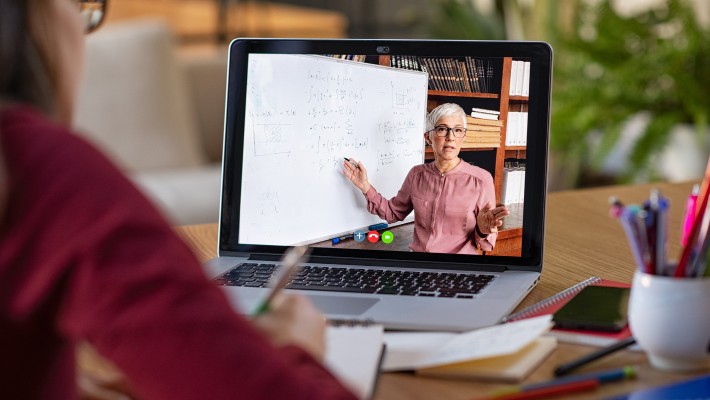Online learning with or without onscreen instructor – which is better?
For online learning, some may think students’ performance has nothing to do with the presence of an onscreen instructor. However, a study led by Professor Li Ping, Dean of the Faculty of Humanities, found that students will fare significantly better with onscreen instructors, even if the instructor is an animated figure.
The study involved 81 PolyU students. Some of them watched video lectures with a human instructor accompanying the lecture slides, while others watched the same video lectures with an animated instructor or with only the lecture slides.
After the lectures, the students had their learning effectiveness assessed. The impact of an instructor’s image on learning was also examined by checking the students’ brain activity using functional magnetic resonance imaging and tracking their eye-movement as they watched the lectures.
It was found that students of the instructor-present groups showed greater synchrony in the activity of brain regions crucial for learning than the no-instructor group, including regions involved in working memory and mentalisation. For eye-movement, the extent to which the students shifted their gaze in unison was higher when an instructor was present, and better-performing students displayed more correlated eye movements.
The results suggest that the image of an instructor serve as a social cue to stimulate a high level of cognitive and socio-emotional processing. Under this condition, learners follow the visual content in the video more closely, give attention more proactively, and learn more effectively.
Professor Li remarked, “Although the pandemic has subsided, online learning through the use of multimedia instructional videos continues to shape education. Our findings contribute to the development of an evidence-based instructional design for multimedia learning, thereby enhancing student’s learning experience and outcome.”
The study’s findings have been published in the journal Proceedings of the National Academy of Sciences.







